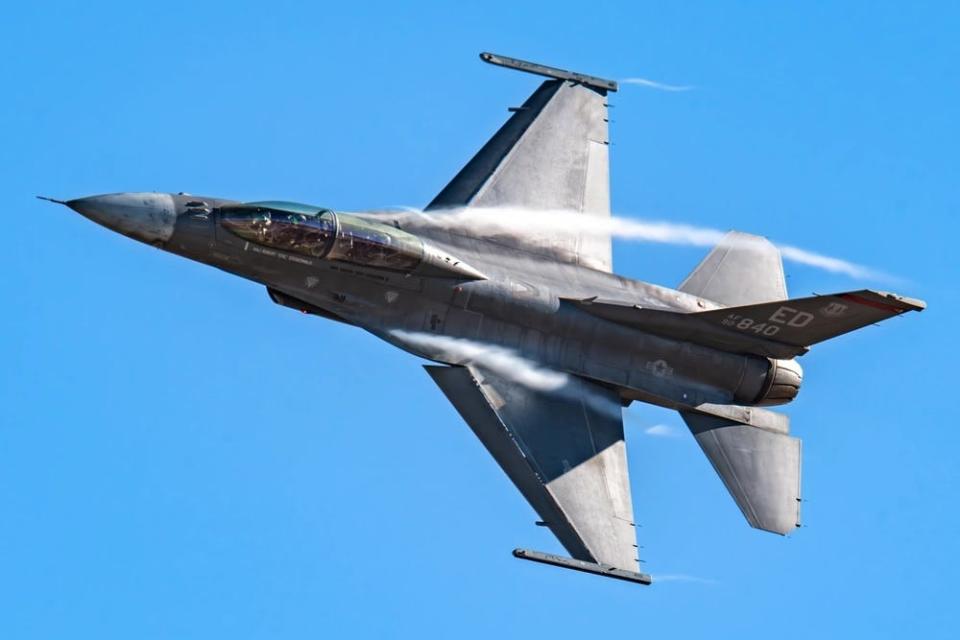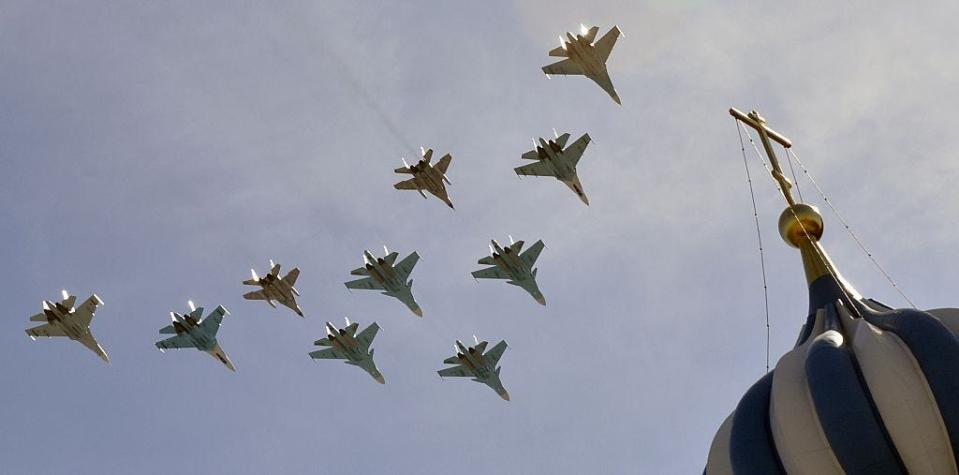Changed rules for Ukraine mean its F-16s will arrive when they can make a far bigger impact, experts say
Ukraine's F-16s now look set to arrive when they can be particularly impactful.
That's because they'll arrive when Ukraine has permission to use other weapons on targets in Russia.
This means that Russian air defenses that could target them can be taken out, experts told BI.
New rules from Ukraine's allies about how it can use weapons they've supplied could have a strong impact on its long-awaited F-16s.
The first of the US-made fighter jets are due to arrive this summer, at a time when they can be particularly impactful in the fight against Russia, experts told Business Insider.
That's because Ukraine now has permission to use weaponry given by its allies to hit targets on Russian soil.
George Barros, a Russian military expert at the US-based Institute for the Study of War, said this will make the F-16s more effective.
A month or so back, he viewed the F-16s as "sort of a mixed bag" — Ukraine needed the capabilities, but Russia had a stronger air force and a major air defense network.
"Now, I'm actually a lot more optimistic," he told BI.
Ukraine can hit targets in Russia
Until May, Ukraine was prevented by its allies from using weapons they'd supplied to strike into Russian territory.
This was a major disadvantage, as Russia could gather troops and equipment just across the border, and launch attacks from places Ukraine was not able to hit.
Many analysts said it meant Ukraine was fighting with one hand behind its back.
But in May, many of its allies loosened the restrictions.
Barros said the long-standing assumption that Ukraine could not hit into Russia meant the expected impact of the aircraft was seen as limited.
"But now I see this glimmer of hope where we're so close to getting all the pieces of the puzzle together where now we can start evaluating air power," he said, "because basically we've written off air power for the last two years."

Peter Layton, a fellow at the Griffith Asia Institute and a former Royal Australian Air Force officer, said that for F-16s to be most effective, Russian air defenses need to be taken out.
Being able to target air defenses stationed in Russia is therefore a major help.
Barros said Ukraine will likely have too few F-16s this summer to make a huge change. But over time, he said, it could "cascade into a large effect."
He added that the US removing more of its restrictions would make a bigger difference. (The US will still not let Ukraine use long-range munitions to strike deep inside Russian territory, where some of Russia's longest-range weaponry can fire at Ukraine from.)
Ukraine's president has also urged its allies to further relax restrictions on using long-range weapons to strike military targets in Russia, saying Ukraine still can't stop its deadly glide bomb attacks.
Ukraine can fight again
Ukraine spent the first months of this year managing critical shortages of equipment and ammunition.
But the US resumed aid in April after Republicans stalled it for six months, and supplies have started reaching frontline soldiers.
That should give a boost to Ukraine's first F-16s, some experts said, though it's not clear how long US support will last compared to when further F-16s may arrive.
Layton said that "on a tactical level" the F-16s arriving alongside replenished arsenals is a boost for Ukraine, but he added that some of Ukraine's shortages might not have been so pronounced if the F-16s had arrived earlier to aid Ukraine's air defenses.
F-16s should soon arrive
Ukraine has asked for F-16s since the start of Russia's full-scale invasion in February 2022, but US permission to send the US-made jets didn't come until May 2023.

Experts say that Ukraine's allies should have given F-16s sooner if they wanted to see the jets making a battlefield impact this year, as issues with pilot training and integrating them into Ukraine's military would likely have been fixed by now.
"If the West donated F-16s a year earlier, then most of these problems would be solved by now," Michael Clarke, a Russia and Ukraine expert and a British national security advisor, told BI.
"But as usual, we left it until the last possible moment when it would make a difference, and then expected the Ukrainians to work miracles with them, which is not going to happen," he added.
Experts also say that Ukraine needs more jets than what has been promised, since having smaller numbers means it needs to be extra cautious with the ones it gets.
Mark Cancian, a retired Marine Corps colonel and a defense strategy expert at the Center for Strategic and International Studies, told BI that "the problem is that there's not going to be very many F-16s."
He said it's unfair to expect Ukraine to achieve massive breakthroughs without significantly more of the planes.
The US has such dominance in the air because it employs "hundreds of aircraft with extensive support systems on the ground," he said.
Ukraine has been promised an estimated 85 jets by Denmark, the Netherlands, Norway and Belgium, but it is not clear how many are due to arrive in the initial wave, or when more will be delivered.
Clarke said that without more jets, "in terms of defending Ukrainian airspace and being able to deal all the way across the front with Russia's numbers, the F-16s are a long way from being able to do that."
To be really effective, he said, Ukraine needs at least 200, along with the support they require.
Even so, the experts said that the F-16s will make a difference for Ukraine, without being a total game changer on their own.
The jets will help replenish lost aircraft, deter Russian jets, and act as air defenses.
Tim Robinson, a military aviation specialist at the UK's Royal Aeronautical Society, told BI the aircraft will also "make Russian pilots there a little bit more kind of wary, a little bit more careful about what they're going up against."
Read the original article on Business Insider

